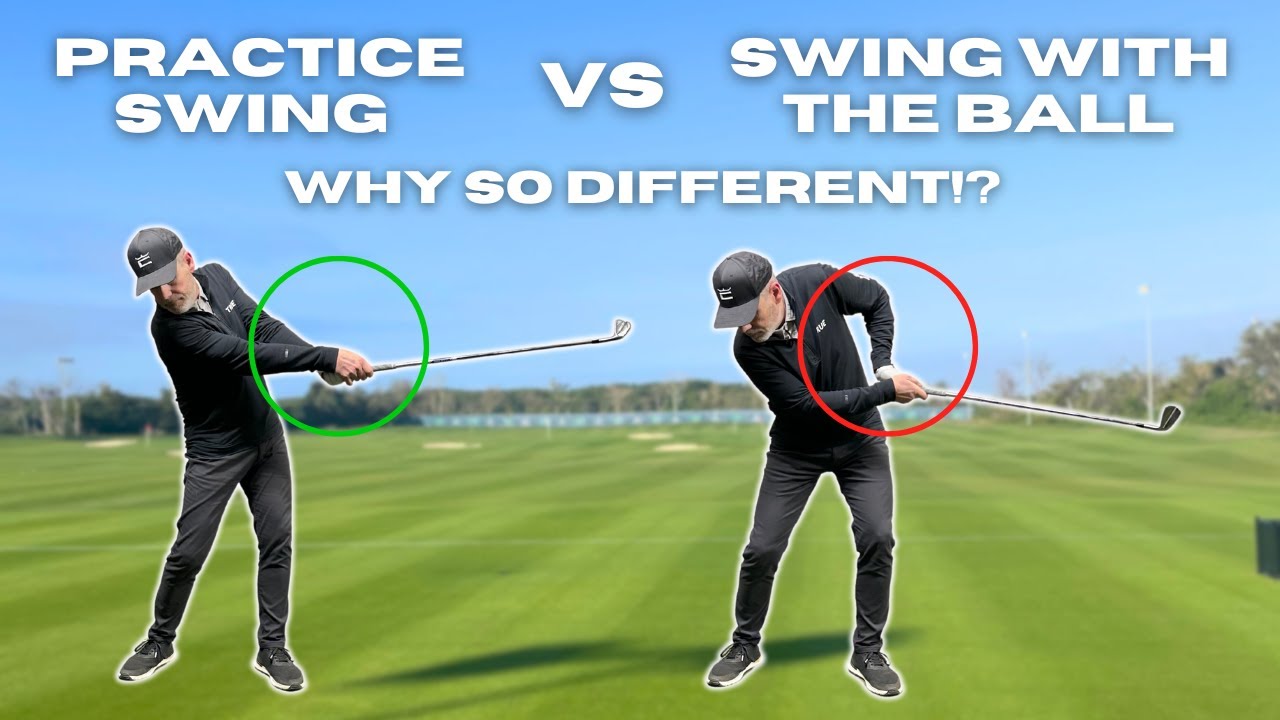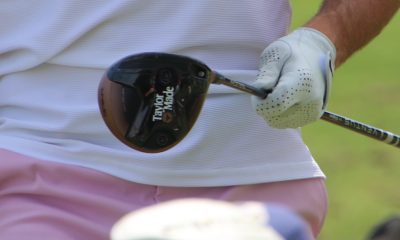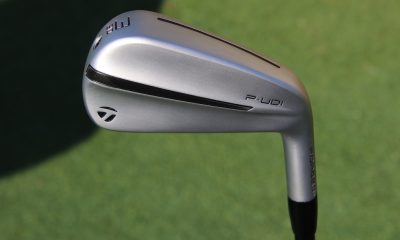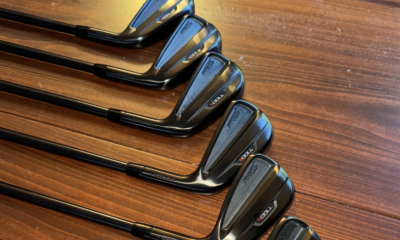Club Building 101: What happens when you cut down a driver
This video examines how cutting down your driver, without factoring in other variables, can cause it to change flex and not play as it was fit or intended.
Check out previous installments of “Club Building 101” below!
- Club Building 101: Understanding epoxy
- Club Building 101: How to properly fit ferrules
- Club Building 101: Counterbalancing golf clubs
- LIKE30
- LEGIT5
- WOW0
- LOL0
- IDHT0
- FLOP0
- OB0
- SHANK17
Instruction
Clement: Why your practice swing never sucks

You hear that one all the time; I wish I could put my practice swing on the ball! We explain the huge importance of what to focus on to allow the ball to be perfectly in the way of your practice swing. Enjoy!
- LIKE0
- LEGIT0
- WOW0
- LOL0
- IDHT0
- FLOP0
- OB0
- SHANK2
Equipment
Mitsubishi Diamana WB: Club Junkie takes a technology deep dive

Earlier this week, Mitsubishi announced the return of its iconic Whiteboard profile with the new Diamana WB shaft.
In our launch story, we offered a rundown of the key technology in the new WB — 80-ton Dialead pitch fiber, Aerospace-grade MR70 carbon fiber, Consistent Feel Design, and the Xlink Tech Resin System. To go deeper, however, we enlisted our Resident Club Junkie and bona fide shaft nut, Brian Knudson, to track down someone from Mitsubishi at the PGA Show. Fortunately, Mitsubishi’s Director of Global Aftermarket Sales, Jonathan Alongi, was on hand to answer all of BK’s questions.
Check out their discussion about the new WB, as well as the 20th anniversary of the original design, in the video above — time stamps of key points below, including a definitive answer as to how the surfboard graphic ended up on the original Whiteboard in 2004!
- :40 – Mitsubishi Japan expands to the U.S. in 2004
- :50 – “The shaft that set the standard”
- 1:12 – “The ‘board is back”
- 1:45 – WB or Whiteboard? Or both?
- 1:55 – The first iteration of the sixth generation of Diamana
- 2:10 – Incorporating key technology from a 20-year journey
- 3:10 – Modifying the tip section for more ball speed
- 3:50 – Delivering ball speed in a low-launch, low-spin shaft
- 4:20 – Drilling down on the shaft profile compared to the original Whiteboard
- 5:00 – The most impressive element of the new WB
- 5:30 – Butt, mid, tip specifications
- 6:00 – WB’s iconic graphics and the Diamana legacy — flowers, surfboard, numbering system
- 8:15 – An abundance of available weights and flexes
- 8:55 – More players going lightweight
Check out more photos and see what GolfWRXers are saying about Mitsubishi WB in the forums.
- LIKE1
- LEGIT0
- WOW0
- LOL1
- IDHT1
- FLOP0
- OB0
- SHANK0
Equipment
2024 Vokey SM10 wedges: Club Junkie’s full fitting video

Our Resident Club Junkie, Brian Knudson, goes through a wedge fitting with Chris Baingo, Titleist’s Club Fitting Analyst.
Get the full story on new SM10 wedges in our launch piece.
- LIKE2
- LEGIT0
- WOW0
- LOL0
- IDHT0
- FLOP1
- OB0
- SHANK0
-

 19th Hole1 week ago
19th Hole1 week agoDave Portnoy places monstrous outright bet for the 2024 Masters
-

 19th Hole2 weeks ago
19th Hole2 weeks agoThings got heated at the Houston Open between Tony Finau and Alejandro Tosti. Here’s why
-

 19th Hole1 week ago
19th Hole1 week agoTiger Woods arrives at 2024 Masters equipped with a putter that may surprise you
-

 19th Hole2 weeks ago
19th Hole2 weeks agoReport: Tiger Woods has ‘eliminated sex’ in preparation for the 2024 Masters
-

 19th Hole3 days ago
19th Hole3 days agoTwo star names reportedly blanked Jon Rahm all week at the Masters
-

 19th Hole3 days ago
19th Hole3 days agoNeal Shipley presser ends in awkward fashion after reporter claims Tiger handed him note on 8th fairway
-

 19th Hole2 weeks ago
19th Hole2 weeks agoAddiction, spinal fusion, and scam artists – Everything Anthony Kim revealed in candid interview with David Feherty
-

 19th Hole2 weeks ago
19th Hole2 weeks agoAnthony Kim says doctors told him that he ‘may not have much time left’ ahead of LIV return























Matt
Jan 31, 2019 at 7:14 am
Absolutely awesome. If I had a shop like that my bag would change daily and I’d have 4 mortgages!!!
Chris
Jan 30, 2019 at 7:41 pm
Trying to understand how this impacts ball flight. I cut my driver down last year. Just butt trimmed. No weight added, no tip trimming. I’ve been happy with it. What would the ball do instead if I had added weight and tip trimmed?
I can easily get the same shaft with the right adapter on ebay, so I’d consider re-doing it correctly.
JuannyBravo
Jan 31, 2019 at 9:06 am
I would leave it the way it is. If you didnt add weight, you softened the shaft slightly, and it lowered the swingweight, which would have kind of a backweighting effect.
If you tipped and add weight, it would play similar, but probably a hair stiffer.
geohogan
Feb 4, 2019 at 9:20 pm
If you want to add weight to an adjustable driver, just order
a different head weight. Their color coded.
geohogan
Feb 5, 2019 at 7:52 pm
@chris
Every golfer can swing a shorter club more easily than a longer club, so why
do we assume cpm , frequency , clubhead weight should be in the same proportion in a shorter club, as a longer club?
If we can swing a shorter club easier, most likely faster, then why not increase the overall weight(counter balance), rather than adding tip weight?
An interesting experiment is to switch 5 iron shaft for 6 iron shaft and visa versa. So your 5 iron head is now on 6 iron shaft and 6 iron head is on 5 iron shaft without changing any weights.
Interesting experiment to learn how club length and clubhead weight affect the ball flight.
Joe
Jan 30, 2019 at 6:55 pm
Terrible video. FCM is a derivitave of CPM. He interchanged the terms twice. Come on GolfWRX. Take this down and re-do it. They laypeople here have no clue what 7.n vs. 8.n means. And he overweighted the head.
chris embardino
Jan 30, 2019 at 3:42 pm
Hmm.. guess i’m not allowed to post?
chris embardino
Jan 30, 2019 at 3:43 pm
maybe it’ll allow me now?
So information missing from this video:
Cutting a shaft does not necessarily change it in a “one size fits all” manner. Each shaft will behave slightly different than another.
Tipping the shaft does not necessarily make it more stiff relative to how it was – i.e. tipping 1/2 inch and leaving 1/2 inch longer on the butt for the same length does not mean it will be stiffer – it depends on the shaft profile.
Adding weight is the majority of what made the shaft softer in this instance – not necessarily the cutting. if he Freq’d the shaft without weight, it would be very close to the original frequency (hzrdus yellow is a backweighted model and performs slightly different than non-backweighted models)
Flex designated as CPM is not a XY axis change, it’s an angled chart. A shaft that is 1 inch shorter should be about 10 CPM faster to be designated the same “flex”.
Shafts are designed by the manufacturer to work at “normal” playing length. 45″ +/- for drivers, and so on from there. When you add or subtract length, they will play differently, regardless. The same as if you blind bore or through-bore the head (for us old heads). See a proper repair shop for any sort of cutting and manipulating. It needs to be done slowly and properly if you want to maintain the playing characteristics of the shaft as they are before the work.
chris embardino
Jan 30, 2019 at 3:45 pm
OK that’s cool censor whatever. Just trying to give some legitimate information pertaining to the video.
Chuck
Jan 30, 2019 at 2:22 pm
Great information and insight…thank you! One question though…near the end you say that the flex changed. Di dit become stiffer or softer?
Scott
Jan 30, 2019 at 12:32 pm
To keep swingweight unchanged It’s 8 grams per inch cut down on a driver, not 12. It’s 1.6 grams per inch. It’s 2 grams per inch on mid irons and a bit more than 2 grams on wedges. It varies based on shaft length.
If you added more than 8 grams your test is interesting, but skewed. The result is fine but a bit exaggerated. The shaft gets softer and must be tip trimmed to maintain the same flex, not just butt cut.
Scheiss
Jan 30, 2019 at 11:44 am
This dude is so totally useless and he always talks like he’s got chew in his mouth, and that is freaking annoying.
Also, get a better camera that follows focus on your person, and if you’re going to continue to annoy us with this video series, at least get a remote mic! Sheesh
Skip
Jan 30, 2019 at 11:59 am
Yep, totally useless and not explaining anything in a clear, concise manner. Trying to sound more complicated than it really is lol.
darrell taylor
Jan 30, 2019 at 11:14 am
So….bottom line……is the shaft stiffer or weaker? Also is the swingweight more important, or the dead weight? You can get a utility pole to a d2 swingweight.
Scott
Jan 30, 2019 at 12:34 pm
Shaft is softer after butt trimmingband adding back weight
Duncan
Jan 30, 2019 at 10:58 am
so how would you get it back to the correct flex after cutting it down? Add more weight? Less weight?
Cody
Jan 30, 2019 at 11:39 am
He didn’t say directly, but at the beginning he pointed to a potential need to tip, in conjunction with cutting the butt. So, maybe if you want to shave an inch off, you would cut the butt .5 and the tip .5. Then add the swing weight back to the club. OR… Cut down .5, add weight, measure, and guess on what to take off the tip.
It’s all exhausting really.
Scott
Jan 30, 2019 at 12:40 pm
Pull the adapter and tip trim it instead of butt cutting…..which almost no one other than a professional builder does. The tip is the softest part of the shaft.
It’s like making a 3 wood. You always tip trim the shaft more than a driver shaft because even though the club is shorter, the 3 wood head is much heavier and causes the shaft to play softer if you were only to butt cut it shorter than the driver shaft.
CrashTestDummy
Jan 30, 2019 at 10:58 pm
Not necessarily. Each shaft manufacturer has their own different shaft trim guides that say either to tip or butt trim. Taper tip shafts are always butt trimmed. You always have to check with the manufacturer on the tip or butt trim guides.
geohogan
Feb 5, 2019 at 5:49 pm
@scott
Some shafts have a very stiff tip and are butt trim only. eg Nunchuk
Like its namesake, Nunchaku, has a very stiff tip, very stiff butt
and a mid section which is wrapped uniquely to absorb torque, flex, bending.
erock
Jan 30, 2019 at 10:53 am
Would have been neat to see the CPM and Frequency without adding the lead. I’d argue more people butt cut without adding any weight back to the head than those that do. Does the shaft now play firmer?
chris embardino
Jan 30, 2019 at 3:37 pm
The shaft will play nearly the same flex, but will feel much lighter. Amount of change depends on the shaft profile. It will CPM faster, but that is because it’s now shorter and would do so wether you cut from the butt or the tip end. I have many many clients that try to DIY and end up ruining the club.
geohogan
Feb 5, 2019 at 7:28 pm
Lets face it. Off the shelf shafts for woods are cheap junk.
If it doesnt work off the shelf throw it out and buy a decent shaft
from a proper fitter. Dont waste your time on junk.
A pretty paint job doesnt mean what your buying is what the pros are playing… it isnt, so dont kid yourself; junk is junk.
It would be better to buy a decent clubhead online and get fitted properly for a decent shaft. Anything shaft you buy new for under a $100 is only worth $10 in labor and material.
geohogan
Feb 5, 2019 at 7:37 pm
Guaranteed, check cpm, frequency on “off the shelf ” shafts for woods and
despite the commonality of paint job, the numbers will be all over the place.
The only consistency in cheap junk golf shafts off the shelf is their inconsistency.
CPM, frequency is a joke when referring to off the shelf golf shafts. Treat each shaft as unique. Either it works for you or it doesnt… period.
JCGolf
Jan 30, 2019 at 10:44 am
Ryan, what is the “Frequency” meausurement here? I alwaya thought CPM was frequency?
Skip
Jan 30, 2019 at 12:03 pm
You’re right. CPM is the frequency, the number is the FCM or Frequency Coefficient Matching number put out by Rifle back in the day.